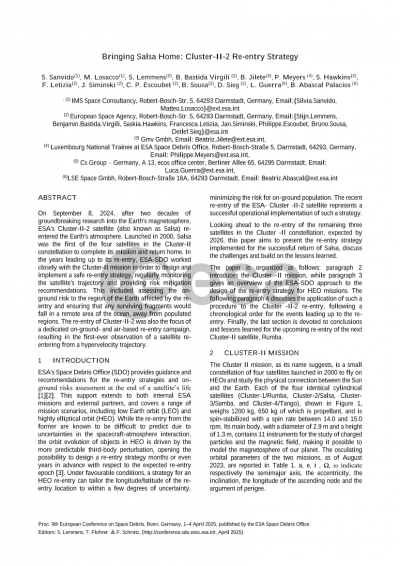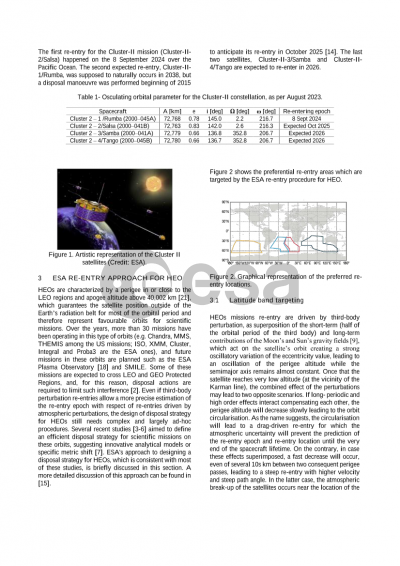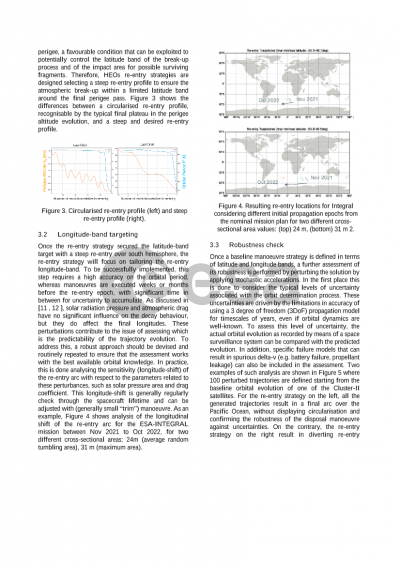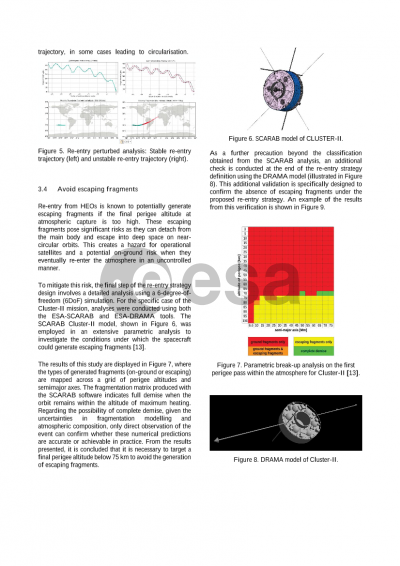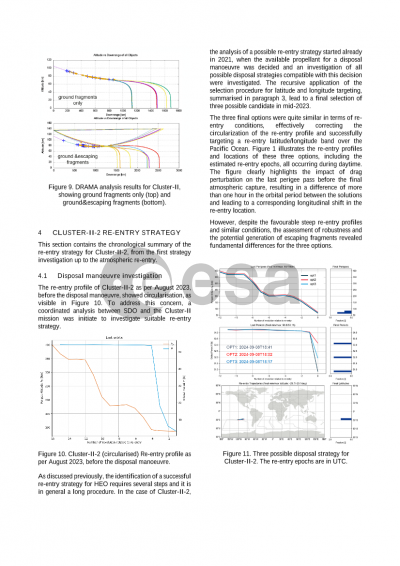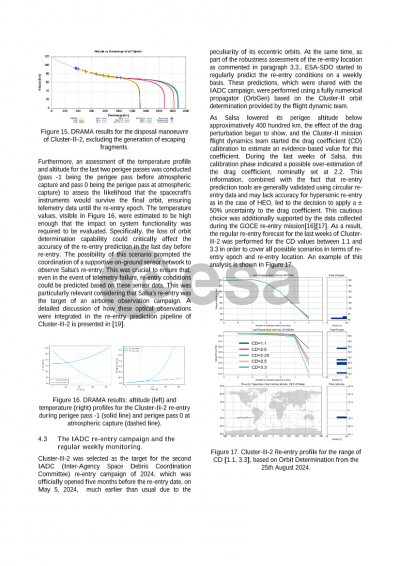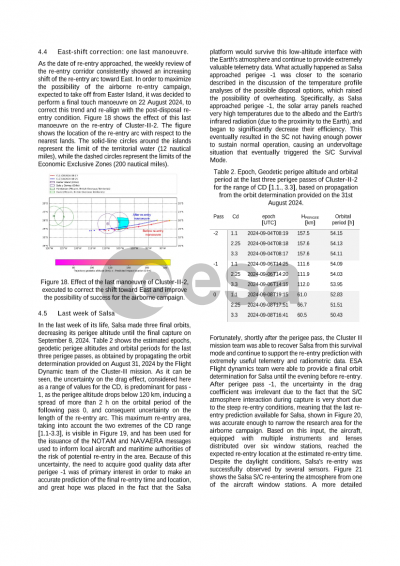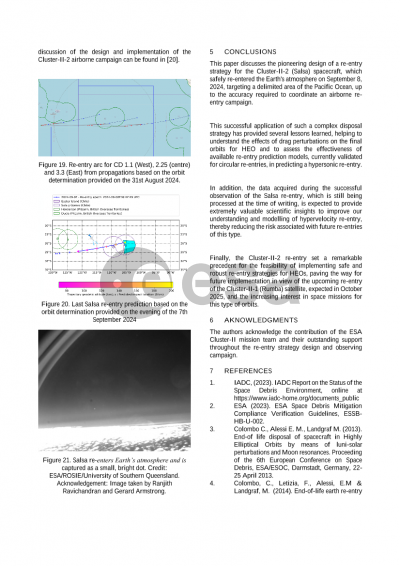Document details

Abstract
ESA's Space Debris Office (SDO) provides guidance and recommendations for the re-entry strategies and on-ground risks assessment at the end of a satellite’s life [1][2]. This support extends to both internal ESA missions and external partners, and covers a range of mission scenarios, including low Earth orbit (LEO) and highly elliptical orbit (HEO). While the re-entry from the former are known to be difficult to predict due to uncertainties in the spacecraft-atmosphere interaction, the orbit evolution of objects in HEO is driven by the more predictable third-body perturbation, opening the possibility to design a re-entry strategy months or even years in advance with respect to the expected re-entry epoch [3]. Under favourable conditions, a strategy for an HEO re-entry can tailor the longitude/latitude of the re-entry location to within a few degrees of uncertainty, minimizing the risk for on-ground population. The recent re-entry of the ESA-CLUSTER-II-2 satellite represents a successful operational implementation of such a strategy.
On September 8, 2024, after two decades of groundbreaking research into the Earth's magnetosphere, ESA's CLUSTER-II-2 satellite (also known as SALSA) re-entered the Earth's atmosphere. Launched in 2000, SALSA was the first of the four satellites in the CLUSTER-II constellation to complete its mission and return home. In the years leading up to its re-entry, the ESA -SDO worked closely with the CLUSTER-II mission in order to design and implement a safe re-entry strategy, regularly monitoring the satellite's trajectory and providing risk mitigation recommendations. This included assessing the on- ground risk to the region of the Earth affected by the re-entry and ensuring that any surviving fragments would fall in a remote area of the ocean, away from populated regions. The re-entry of CLUSTER-II-2 was also the focus of a dedicated ground- and air-based re-entry campaign, resulting in the first-ever observation of a satellite re-entering from a hypervelocity trajectory and providing invaluable insights into the dynamics of such re-entries.
Looking ahead to the re-entry of the remaining three satellites in the CLUSTER-II constellation, expected by 2026, this paper aims to present the re-entry strategy implemented for the successful return of SALSA, discussing the challenges and building on the lessons learned.
[1] S. Lemmens, B. Bastida Virgili, V. Braun, T. Flohrer, Q. Funke, H. Krag, F. Mclean, K. Merz. From end-of-life to impact on ground: An overview of ESA’s tools and techniques to predicted re-entries from the operational orbit down to the Earth’s surface. Proceedings of the 6th ICATT Conference.
[2] S. Lemmens, K. Merz, Q. Funke, B. Bonvoisin, S. Löhle, H. Simon. Planned yet uncontrolled re-entries of the Cluster-II spacecraft. Proceedings of the 7th European Conference on Space Debris, Darmstadt, Germany, 18–21 April 2017, published by the ESA Space Debris Office Ed. T. Flohrer & F. Schmitz.
[3] F. Letizia, S. Sanvido, S. Lemmens, K. Merz, R. Southworth, B. Sousa, ESA's current approaches to end-of-life strategies for HEO missions, Journal of Space Safety Engineering, Volume 10, Issue 4, December 2023, Pages 407-413
Preview
